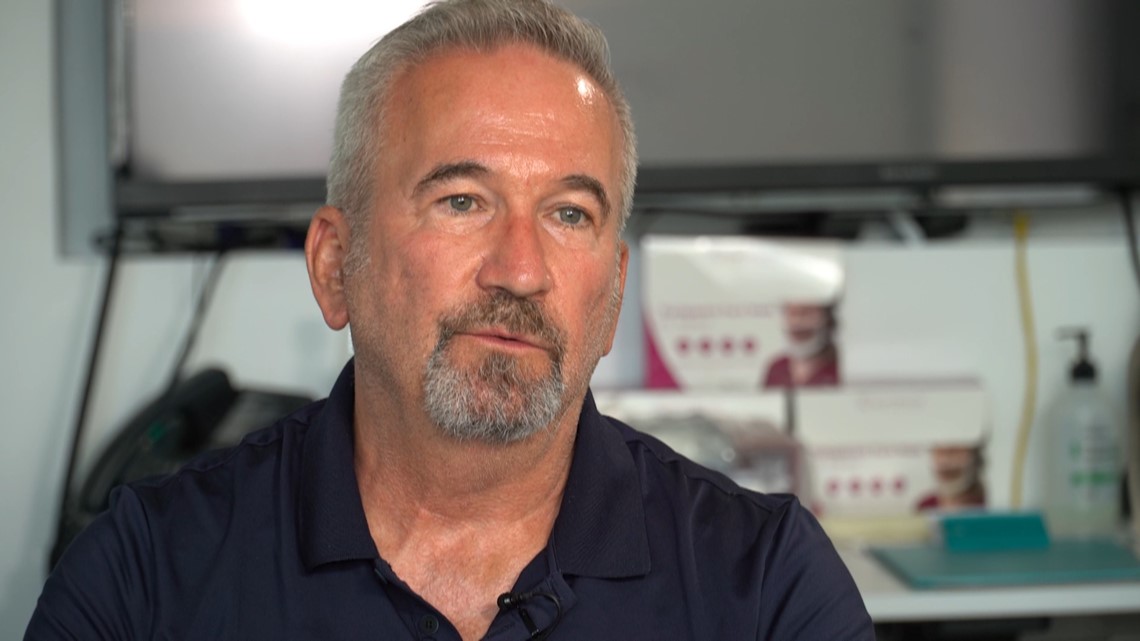WASHINGTON — After nearly 35 years since the first display of the AIDS Memorial Quilt on the National Mall, Mike Smith returns with a sense of disbelief and pride.
As one of the co-founders of the NAMES Project Foundation that organized the memorial, Smith hopes the 35th anniversary of the solemn yet loud gesture of protest and support for AIDS victims will continue to have a rippling effect.
"That was such a dark time, but we had to fight very, very hard to get a quilt open because the government at the time did not want to address the issue," Smith told WUSA9. "I'm hopeful that there are still groups of people who come together who might not have the right skills but who want to make a difference, and they can and I think that's our legacy."
To commemorate the anniversary, the National AIDS Memorial will hold an outdoor display of 3,000 panels of the Quilt at the Golden Gate Park in San Francisco on Saturday, June 11 and Sunday, June 12.
The organization also had more than 300 displays in schools and community centers last year.
Smith, who recently moved to D.C. from San Francisco, said there is another project in the works to tour panels to southern states with higher rates of HIV.
"It doesn't do any good if it sits on the shelves," Smith said. "It becomes alive when you get it open someplace. We're going to bring in the Quilt and work closely with AIDS organizations in cities in the South that are really struggling to get the word out and hopefully we can give them a tool that can build awareness in their community."


At the height of the AIDS epidemic in the 80s, the effort began when gay rights activist Cleve Jones asked fellow supporters to write on placards the names of friends and loved ones who died of AIDS. The placards taped on the walls of the San Francisco Federal Building resembled a patchwork quilt.
The idea blossomed to build a memorial in D.C. that displayed the names of 2,000 people in 1987. It sparked a nationwide movement and other displays on the National Mall throughout the years. By 1996, the memorial honored 48,000 names.
"It still kind of chokes me up to look down this Mall and think about what we were able to accomplish in covering the whole thing in fabric," Smith added. "We had panels from every state and half came from mothers who shipped it off to us so that their dead son could be part of something like this. That built an extraordinary bridge between the straight community and gay community."
Living through the AIDS epidemic is forever embedded in people like Randy Pumphrey, the senior director of behavioral health at Whitman-Walker Health. In the '80s, Pumphrey served as a chaplain at Saint Elizabeth's Hospital and completed his internship during seminary school at Washington Hospital Center. Not only was he losing his own friends, but he sat by the beds of AIDS patients on the brink of death.


"For a lot of the time I lived in death and I didn't live in life," Pumphrey stressed. "It was in those moments I would sit with somebody as they died oftentimes with a family member and sometimes by themselves because their family has left them and didn't want anything to do with them. These were guys who had two years ago been vibrant and young and dancing in the club with shirts off and now they were frail sometimes covered with lesions and having difficulty breathing."
Pumphrey made a conscious effort not to project his religion on the patients but meet them where they felt most comfortable. That included his friend Bruce, who died at 27 years old alongside his family, friends and boyfriend Tommy. While religion did not play a big role in Bruce's life, Pumphrey helped create a space for loved ones to say goodbye when he was about to die.


"Tommy collapsed into my arms and he said, 'I will never hate you so much in my life for making me do that'" Pumphrey recalled. "I told him what he did was really good. Bruce needed to hear that."
In reality, there was a lot of shame and stigma that hovered over the gay community as the AIDS epidemic worsened. The lack of research and acknowledgment from President Ronald Reagan in the beginning enraged communities.
Many would argue the effects of the fear and misunderstanding in the '80s could still be felt today as the Food & Drug Administration (FDA) continues to restrict gay and bisexual men from donating blood.

